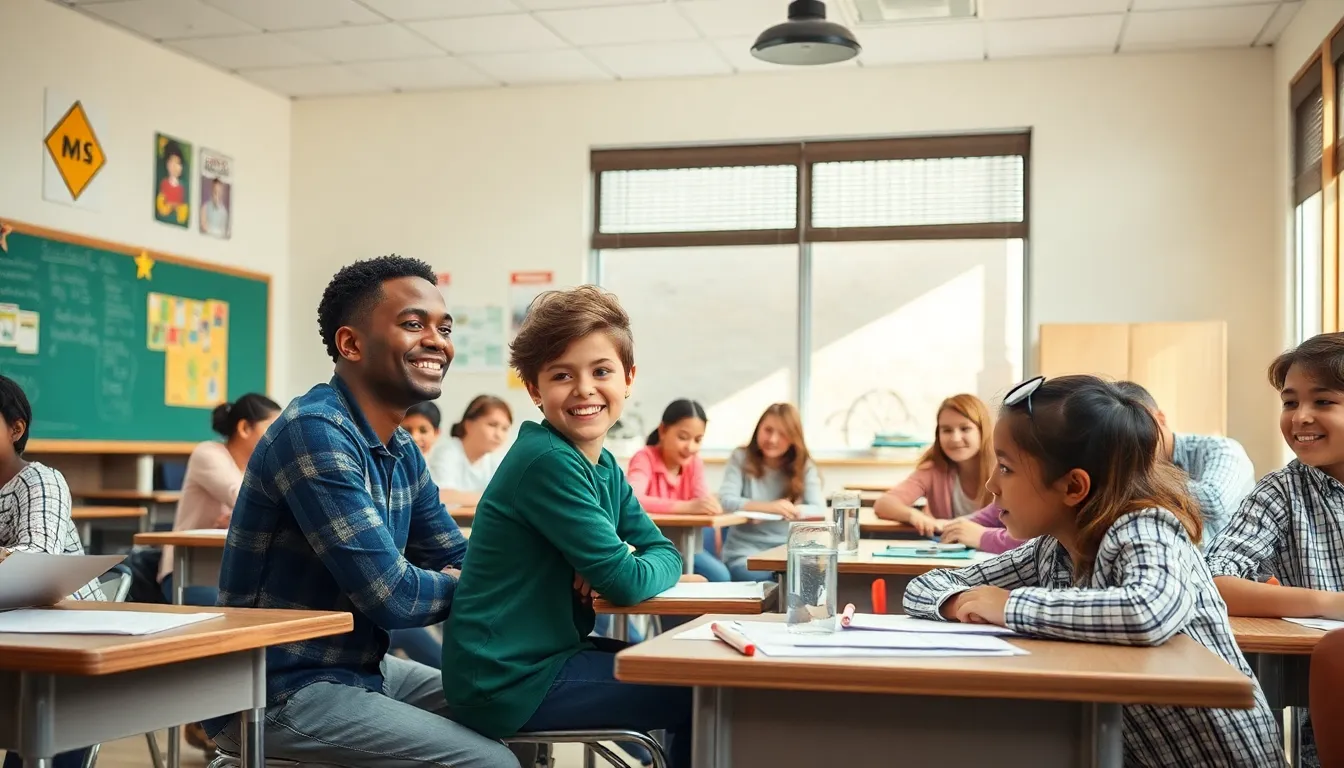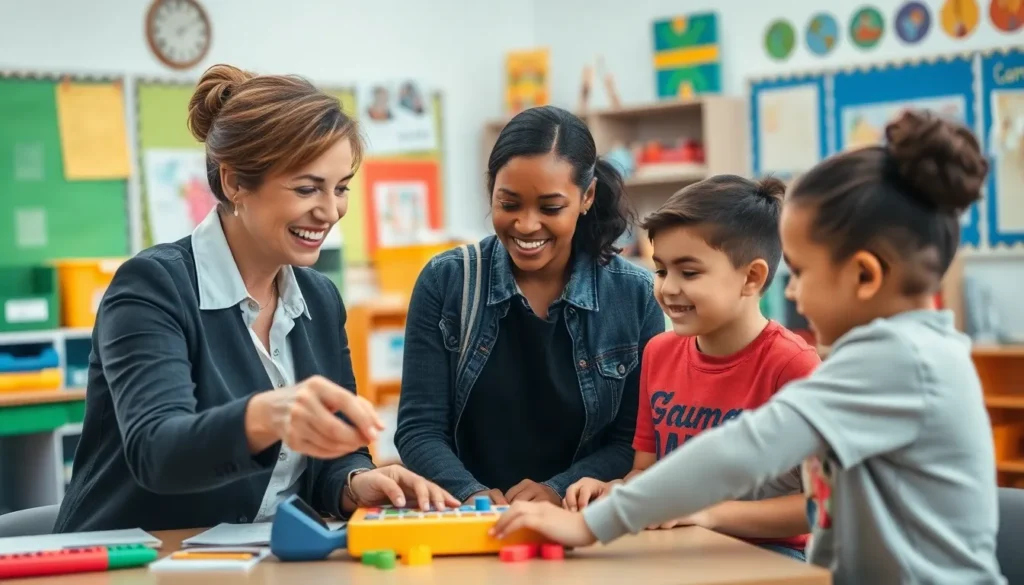In a world where every child deserves a chance to shine, special education often gets overlooked like a forgotten sock in the laundry. But hold on—it’s time to flip the script! “Special Ed? I Got It Made!” isn’t just a catchy phrase; it’s a celebration of the unique strengths and talents that come from tailored learning experiences.
Imagine a classroom where creativity meets individualized support, and every student thrives like a plant in the sun. With the right resources and a sprinkle of humor, special education can be a game changer. So buckle up and get ready to discover how embracing differences not only enriches lives but also makes the journey a whole lot more fun! Who knew that learning could feel like a joyride?
Table of Contents
ToggleOverview of Special Ed I Got It Made
Special education provides essential support for children with unique learning needs. It addresses diverse abilities through tailored approaches, ensuring that every child receives the attention they deserve. Innovative methods, like the “I Got It Made” program, focus on creating engaging environments that foster skills and confidence.
Students benefit from individualized education plans. These plans outline specific goals and accommodations, adapting learning strategies to fit each student’s strengths. By emphasizing a holistic approach, special education encourages social, emotional, and academic growth. Special educators often utilize creative resources, integrating hands-on activities that captivate students’ interests.
Collaboration among educators, families, and specialists enhances the educational experience. Open communication ensures that everyone involved understands the child’s requirements and progress. Resources such as workshops and training can help families advocate for their children’s needs.
Technology also plays a crucial role in special education. Assistive tools help bridge learning gaps while empowering students to express their thoughts and ideas. Classroom environments often incorporate various technologies, enabling personalized learning experiences.
When celebrating differences, special education fosters an inclusive atmosphere. It instills a sense of belonging, making students feel valued and understood. By highlighting each child’s talents, educators inspire growth and development in all areas of life.
Programs that embrace creativity, flexibility, and individualized support create opportunities for success. These proactive approaches ensure that children not only learn but thrive, reinforcing the notion that each child can achieve greatness.
Themes Explored


This section highlights key themes relevant to special education, emphasizing the significance of inclusion and the challenges faced within the system.
Inclusion and Acceptance
Inclusion fosters a sense of belonging for students with diverse learning needs. Acceptance strengthens social interactions, allowing students to form relationships based on mutual respect. Classrooms that celebrate differences create supportive environments where unique strengths shine. Engaging activities encourage participation from all students, making learning enjoyable. Furthermore, collaboration among educators and families promotes understanding and empathy, essential for an inclusive atmosphere. By embracing diversity, students gain a broader perspective on life, shaping them into compassionate individuals.
Challenges in Special Education
Challenges in special education often stem from resource limitations. Many schools face budget constraints that hinder program development. Teachers may encounter inadequate training, impacting their ability to support diverse learners effectively. Communication barriers between parents and educators can lead to misunderstandings, affecting student progress. Additionally, stigma surrounding special education can create feelings of isolation among students. Tackling these challenges requires proactive approaches, such as professional development and community engagement, ensuring that every child receives the necessary support to thrive.
Key Characters and Their Development
Each character in “I Got It Made” embodies unique traits that contribute to the narrative’s depth. The protagonist, Jamie, navigates challenges with resilience. Jamie’s growth showcases the journey from self-doubt to confidence, emphasizing the impact of supportive peers and educators.
Ella, Jamie’s best friend, plays a crucial role in fostering inclusion. She advocates for understanding, demonstrating how friendship can bridge gaps. Ella’s development highlights the importance of empathy and support in special education settings.
Another key figure, Mr. Thompson, serves as a dedicated teacher. His innovative teaching methods cater to diverse learning styles, promoting engagement. Mr. Thompson’s evolution reflects the significance of adapting techniques to meet each student’s needs.
Sarah represents the perspective of a supportive parent. Her advocacy for Jamie spotlights the vital role families play in special education. Sarah’s journey reveals the challenges parents face and their commitment to ensuring their children receive necessary resources.
Liam, the classmate who initially struggles with acceptance, undergoes significant transformation. Through interactions with Jamie and Ella, he learns to appreciate differences. Liam’s character arc illustrates the potential for growth through understanding and experience.
The interactions among these characters demonstrate how collaboration enhances personal development. Each relationship contributes to a broader theme of inclusion, reinforcing the idea that everyone can thrive in supportive environments. Their stories reflect the multifaceted nature of special education, illustrating that empowering individuals leads to collective growth.
Teaching Strategies Highlighted
Special education programs utilize various teaching strategies to cater to students’ unique learning needs. Emphasizing creativity and adaptability can significantly enhance the educational experience.
Differentiated Instruction
Differentiated instruction tailors lessons to meet diverse learning styles and abilities. Educators assess students’ strengths and weaknesses, enabling them to provide appropriate resources. Grouping students based on their skill levels allows for targeted support, ensuring everyone progresses at a comfortable pace. Various materials and activities, such as visual aids and hands-on tasks, engage learners and enhance understanding. Flexibility in teaching methods promotes a more inclusive classroom environment, fostering both academic and social growth.
Collaborative Learning Approaches
Collaborative learning encourages students to work together on projects and activities. Working in small groups helps build communication skills and fosters peer relationships. Inclusion is a priority, as diverse perspectives enrich discussions and problem-solving efforts. Teachers facilitate these interactions, guiding students to share their strengths and learn from one another. Involvement of families in group projects reinforces the support system for students, creating a sense of community within the classroom.








